Caring for Your Pearls: Preventing Peeling and Damage

Pearls have enjoyed enduring popularity in contemporary fashion, adorning fashion-conscious individuals' necks, ears, and wrists for centuries.
Their timeless elegance and understated charm make them a cherished addition to any jewellery collection.
However, to maintain their allure, it is crucial to address the issue of pearl peeling, a common concern among pearl enthusiasts.
In this guide, we will delve into the intricacies of pearl care, offering essential tips to prevent peeling and other damage that can compromise the lustre of these precious gems.
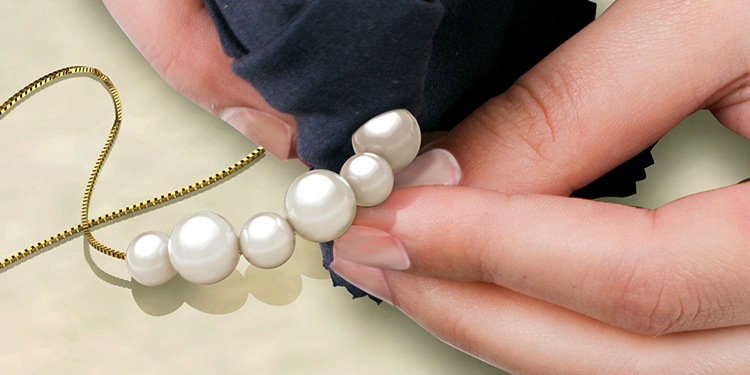
Before embarking on a pearl care journey, it is important to understand the difference between natural pearls and faux pearls.
This knowledge forms the foundation of effective care routines, ensuring you properly treat your pearls.
Join us as we navigate the delicate world of pearl maintenance and discover the secrets to preserving the timeless beauty of these treasured gems.
Understanding Pearls
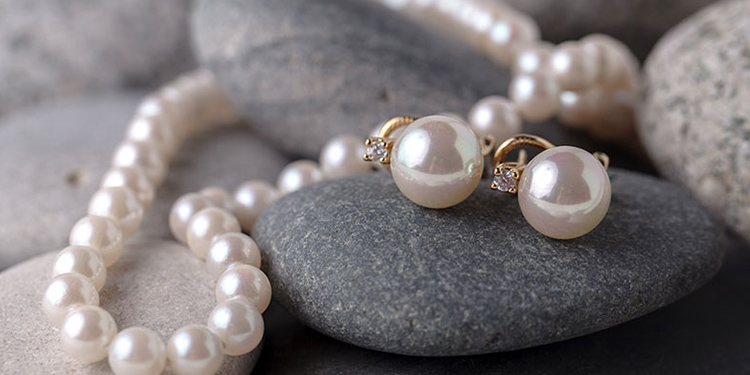
Pearls, exquisite gems revered for their timeless beauty, are renowned for their delicate nature and softness, which set them apart from other precious stones.
Comprising layers of nacre, these lustrous treasures are particularly vulnerable to damage, making their care and handling necessary.
Jewellers, custodians of these precious orbs, play a vital role in maintaining their pristine allure.
Proper handling requires a delicate touch and meticulous craftsmanship.
A mishap, a rough touch, or exposure to harsh chemicals can lead to irreversible damage, forever altering the pearl's iridescent charm.
Understanding the cost implications of pearl replacement is equally crucial.
Factors such as pearl size, shape, colour, lustre, and the rarity of the variety all influence the price of a new pearl.
A damaged pearl can lead to a significant loss in both monetary and sentimental value.
Can Nacre Be Reconstructed?
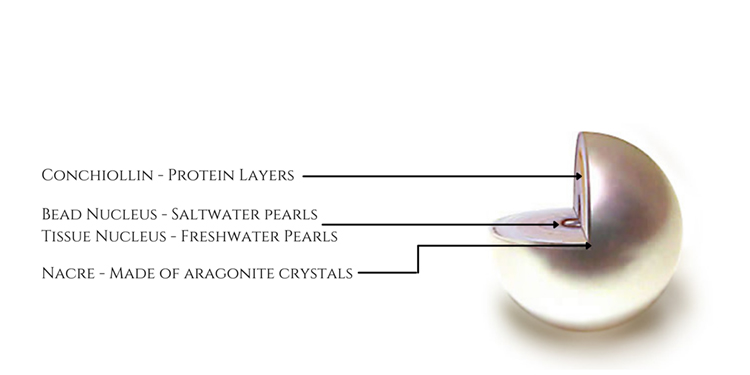
The lustre and resilience of a pearl owe their existence to a substance known as nacre, or mother-of-pearl.
While pearls are renowned for their natural beauty, the question arises:
Can nacre be reconstructed when damaged or compromised?
In this exploration, we delve into the experimental efforts made towards reconstructing damaged pearl nacre, the current limitations and challenges faced in this pursuit, and the practical option of replacing damaged pearls.
Experimental efforts to reconstruct damaged pearl nacre
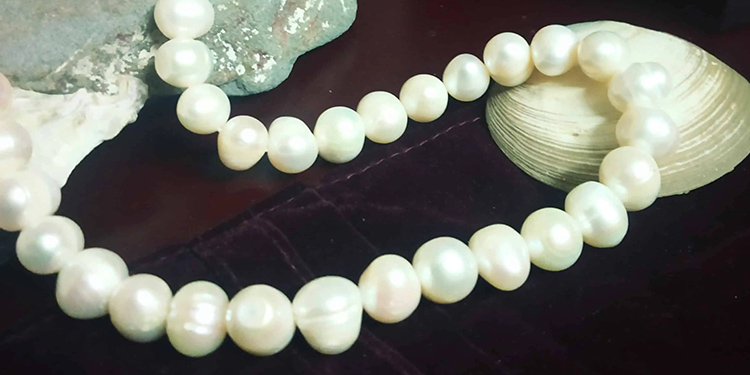
In the realm of pearl restoration, scientists and artisans have ventured into the territory of nacre reconstruction.
Various methods, including biotechnology and advanced materials science, have been employed to replicate the exquisite layers of nacre.
These experiments aim to salvage damaged pearls and restore them to their former glory, often focusing on sustainability and conservation.
The current limitations and challenges in nacre reconstruction
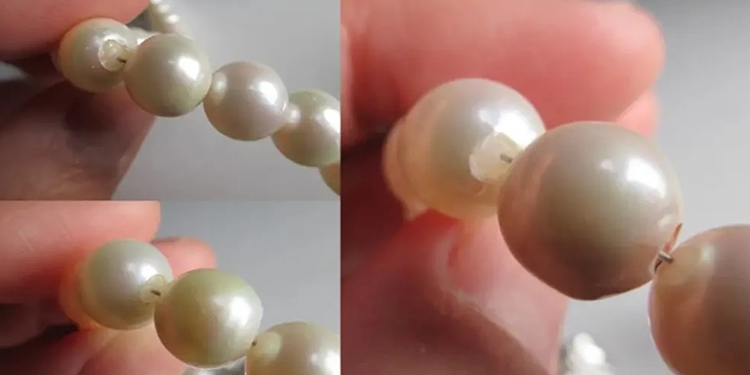
While significant progress has been made in understanding the nacre's structure and attempting to recreate it, numerous challenges persist.
The intricate, layered composition of natural nacre remains difficult to precisely mimic, resulting in artificial nacre falling short in lustre, durability, and overall aesthetic quality.
Additionally, the cost and complexity of these reconstruction processes can be prohibitive, making them impractical for all but the most exceptional pearls.
The practical option for replacing damaged pearls:
Given the current limitations in nacre reconstruction, replacing damaged pearls with new, high-quality ones remains a practical option.
Jewellery experts can seamlessly match replacements to existing pieces, ensuring continuity in design and value.
This approach often proves more straightforward and cost-effective, guaranteeing the continued enjoyment of pearl-adorned treasures.
Prevention: Protecting Your Pearls
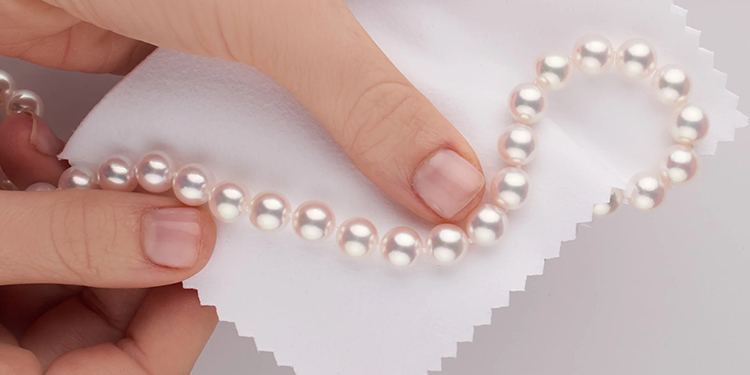
When it comes to safeguarding the timeless allure of your pearls, proactive measures play a pivotal role.
Regular cleaning and restringing constitute essential practices for maintaining these exquisite gems.
The Significance of Regular Cleaning and Restringing
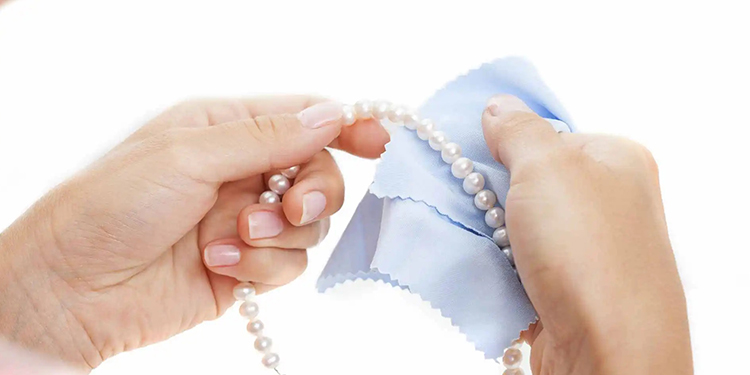
Cleaning your pearls at regular intervals is imperative in preserving their natural radiance.
Over time, sweat, oils, and dust can accumulate on the surface, dulling their lustre.
After each wear, a gentle wipe with a soft, damp cloth can help remove these contaminants, keeping your pearls looking their best.
Equally crucial is the practice of restringing your pearl jewellery periodically.
The silk thread that holds your pearls together can weaken and stretch over time, increasing the risk of breakage or loss.
By restringing your pearls regularly, you ensure they remain securely fastened, reducing the chances of an unfortunate mishap.
How Restringing Safeguards Pearls from Dirt and Debris
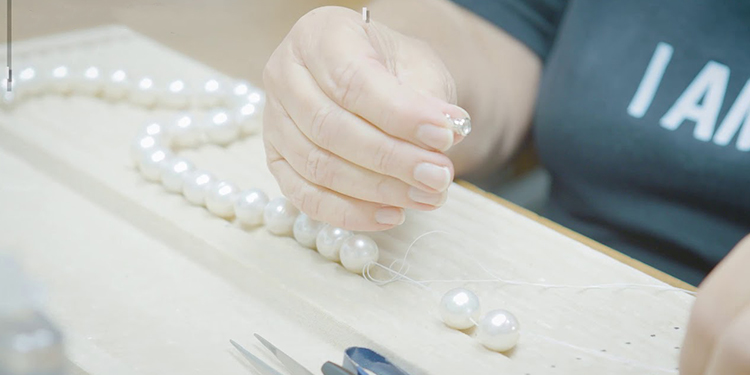
Restringing strengthens the structural integrity of your pearl necklace or bracelet and safeguards your pearls from dirt and debris.
When pearls are strung too closely, friction can occur, potentially causing surface damage or peeling.
Properly spaced knots created during restringing serve as protective barriers, preventing pearls from coming into contact with one another and preserving their delicate surface.
The Importance of Protecting Pearls from Chemical Exposure
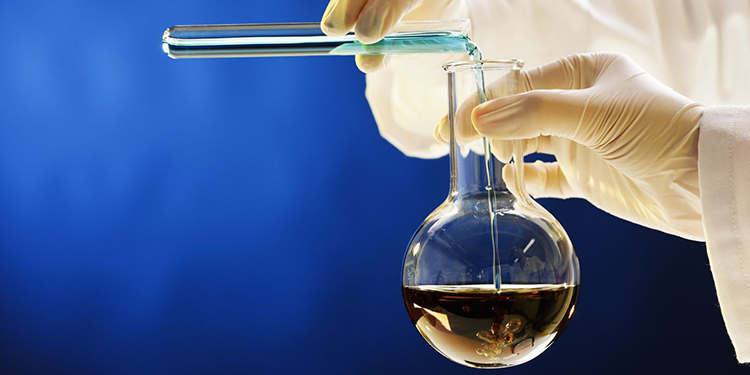
Pearls are sensitive to chemicals, which can mar their pristine surface.
Avoid exposing your pearls to perfumes, hairsprays, cosmetics, and household cleaning agents.
These substances can corrode the pearl's nacre, leading to irreparable damage.
Always ensure that your pearls are the last thing you put on and the first thing you take off when dressing, minimising exposure to potentially harmful chemicals.
The List of Harmful Chemicals
When safeguarding the natural beauty of pearls, it's essential to be well-informed about the chemicals that can harm them.
With their delicate nacreous layers, Pearls are particularly susceptible to damage from various substances.
One of the most common culprits is ammonia, found in household cleaners and some jewellery cleaning solutions.
Ammonia can erode the layers of nacre, causing pearls to lose their lustre and structural integrity.
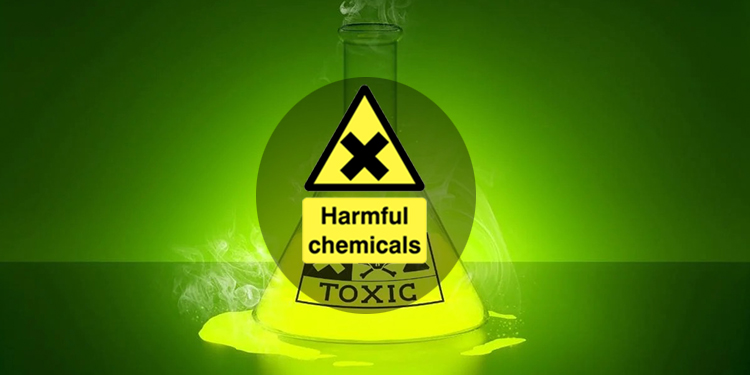
Furthermore, substances like hair spray, perfume, and cosmetics, which often come into contact with jewellery, can pose a significant threat.
These products may contain harsh chemicals that, over time, lead to discolouration, dullness, and even peeling of the pearl's surface.
Emphasizing the longevity of well-maintained pearls is crucial.
By being aware of these potential hazards and taking proper precautions, pearl enthusiasts can ensure that their cherished pearls remain a symbol of elegance and refinement for future generations.
So, for those who cherish their pearl jewellery, understanding and avoiding harmful chemicals is the key to preserving their enduring beauty.
Taking Care of Your Pearls
Cherished for their timeless elegance, Pearls require delicate care to maintain their exquisite lustre.
Here are some best practices to ensure your pearls remain a symbol of enduring beauty:
A. Natural Oils Preservation: Pearls thrive on contact with your skin.
The natural oils in your skin can enhance their shine.
Wearing them can keep them radiant.
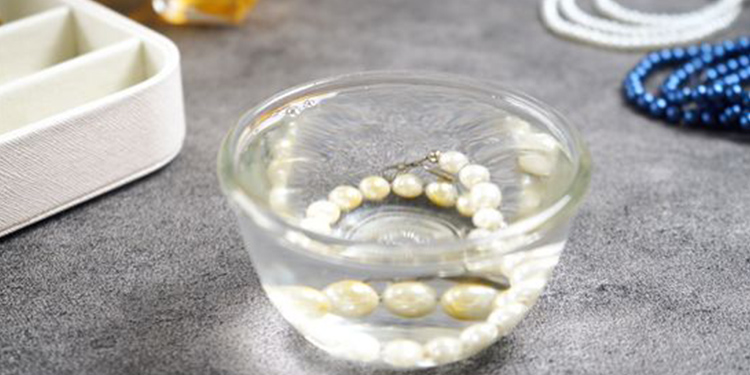
B. Post-Wear Wiping: After wearing your pearls, gently wipe them to remove sweat, oils, and dirt.
This prevents these substances from dulling their surface.
C.Proper Storage: Storing pearls separately from other jewellery can prevent scratches.
Place them in a soft pouch or a lined box to protect their delicate surface.
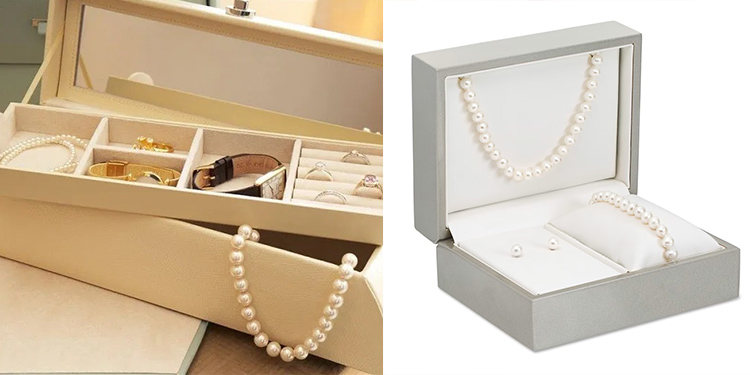
D. Optimal Moisture:
Pearls are organic gems and need some moisture.
Avoid airtight containers; store them in a breathable environment to maintain their lustre.
E. Avoid Immersion:
Never submerge your pearls in water or expose them to harsh chemicals, which can damage their surface.
F. Exercise Caution:
Perspiration from exercise contains salts that can harm pearls.
Avoid wearing them during strenuous activities to ensure their longevity.
Seek Professional Advice

When caring for your pearls, seeking professional advice is the first step to ensure the longevity and beauty of these exquisite gems.
A reputable jeweller should be your first port of call for pearl-related issues.
These experts possess the knowledge and experience needed to assess the condition of your pearls accurately and recommend appropriate solutions.
Selecting a specialised jeweller well-versed in pearl cleaning and maintenance is paramount.
Not all jewellers are equally skilled in handling pearls; these gems require delicate care to preserve their natural lustre and prevent damage.
Look for a jeweller with a proven track record in working with pearls, as they will possess the necessary tools and techniques to clean and restore your pearls effectively.
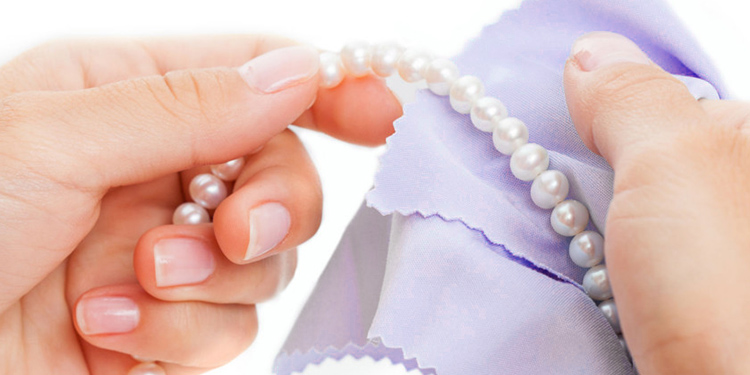
Moreover, consider combining your pearl care with restringing services.
Over time, pearl necklaces and bracelets may require restringing to maintain structural integrity.
A skilled jeweller can inspect the thread and clasp, ensuring your pearls are securely and beautifully strung for years.
By seeking professional advice and services, you can cherish your pearls' timeless elegance while keeping them pristine.
Conclusion
The enduring appeal of pearls in contemporary fashion necessitates a thorough understanding of their care and maintenance.
With proper knowledge and proactive measures, including professional advice and regular upkeep, you can ensure that your pearls continue to radiate timeless elegance, remaining treasured heirlooms for generations to come.


Leave a Comment